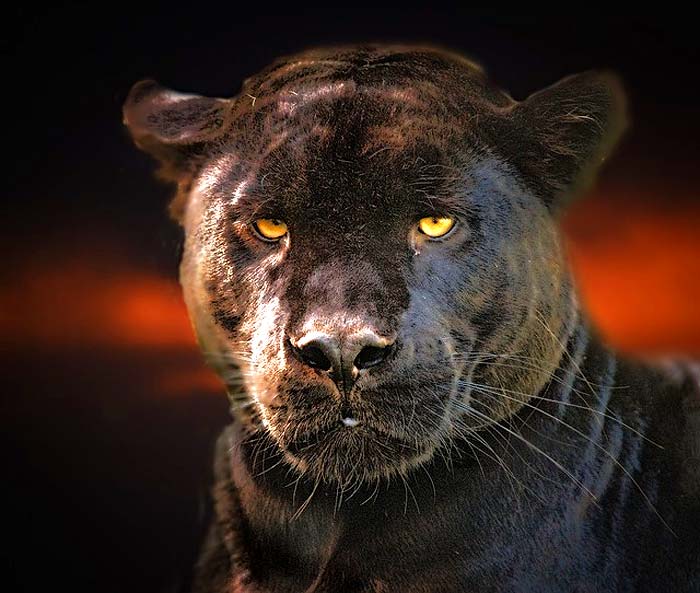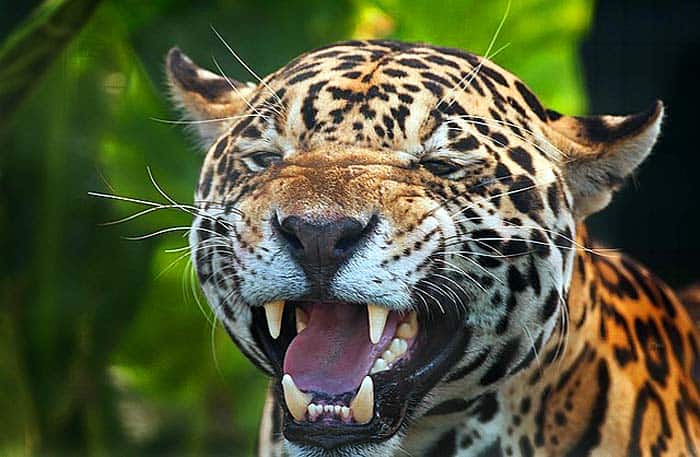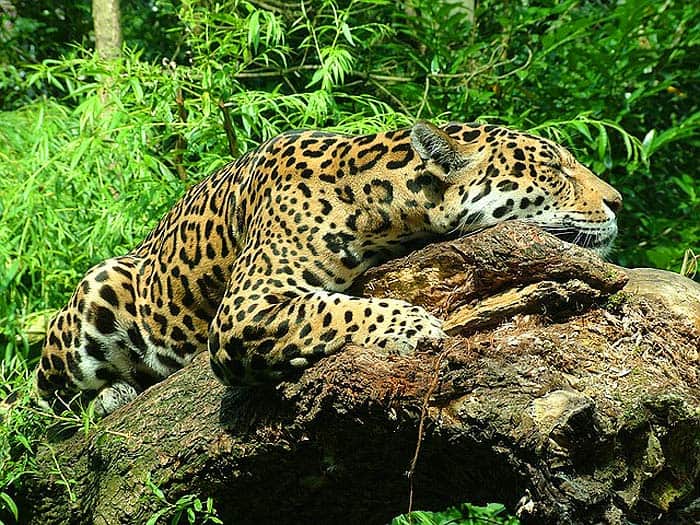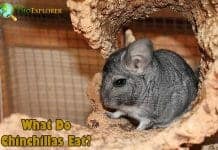
What Do Jaguars Eat? Jaguars are enormous cats found mostly in north, south, and Central America. When looking at their size, jaguars come in at third place after lions and tigers. These cats are known for their unique dark spots which line their yellow-orange coats.
The dark spots are also referred to as rosettes because they resemble roses.
Jaguars are strict carnivores. These animals feed mainly on meat which may be from fish, mammals such as monkeys (Geoffroy’s Spider Monkey), armadillos, birds such as peacocks, or reptiles.
Table of Contents
What do Jaguars Eat?
Jaguars feast on a meaty diet. Their broad palate includes fish, tapirs, turtles, caimans, deer, and capybaras. They also eat snakes, peccary, monkeys, crocodiles, and porcupines.
![]()
Types of Jaguars and their Habitats

Jaguars are the only existing species of the genus Panthera native to the Americas. Only one jaguar species exists Panthera onca.
- Numerous jaguar subspecies have been described, and they are determined by the location they are likely to be found.
- Examples of these subspecies include the Central American jaguar, Arizona Jaguar, East Brazilian jaguar, Yucatan jaguar, Paraguay Jaguar, North Eastern jaguar, and the Peruvian jaguar.
- Interestingly, black jaguars are in existence and, in the Amazon, they are known as black panthers.
- When viewed closely, the rosettes are pretty much visible on their dark coats. Black jaguars are often considered different from normal jaguars, but they are the same species.
- The only difference between the two is that black jaguars have a black coat, resulting from a gene dubbed melanism.
- Like other jaguars, black jaguars are powerful, especially in their hunting, which gives them an edge.
![]()
Jaguar Habitats
Jaguars inhabit a wide array of areas including moist lowland forests (dense), thickets, swamps, coastal forests, and shrubland.
- They are mostly found next to water bodies like lagoons, rivers, swamps, and streams (slow-moving), thanks to them being excellent swimmers.
- Water bodies are critical to jaguars because they provide a good source for prey.
![]()
How Do Jaguars Hunt?
Jaguars are strictly carnivorous. For them to survive, they have developed good hunting strategies.

- One technique a jaguar uses to hunt is stalking its prey on the ground. A jaguar would use thick vegetation for cover so that its prey is not suspicious.
- Jaguars can also climb trees to stalk their prey. Upon locating their prey, jaguars proceed to prepare for an ambush.
- They then pounce on their prey and kill them either by biting their necks and suffocating them or piercing their skulls’ rear ends.
- The powerful canines and jaws that jaguars possess are pivotal in their hunting quests. These powerful built-in cutleries allow them to effortlessly slice through the tough reptilian skin or carapaces in the case of turtle prey.
![]()
When Do Jaguars Eat?
Previously thought to be nocturnal, jaguars are crepuscular.
- These enormous cats are active during dusk and dawn. As such, they will be found foraging for food during these times.
- They have also been active during the day.
![]()
How often do Jaguars Eat?
Jaguars eat daily. An average-sized adult diet eats close to 50 pounds of meat during times when it has not had enough food.

- However, when they can consistently get food, jaguars will eat less food every day.
- The implication from the above assertion is that how often jaguars feed depends on their food availability and quantity.
![]()
What Eats Jaguars?
Jaguars are at the apex of their ecosystem, meaning they have very few predators.
- The primary predators of jaguars are humans, who hunt them through illegal poaching. Humans often kill jaguars for their paws, teeth, and pelts.
- Lions eat Jaguars too.
![]()
Where do Jaguars fit in the Animal Food Chain?
Jaguars play a vital role in the ecosystem because these big cats are at the top of their food chain.
- They are opportunistic feeders that depend on many organisms if available.
- They consume organisms like fish, capybara, peccary, and tapirs. As a result, jaguars impact the local population of these creatures, thus preventing overpopulation.
- This role ensures they balance the food chain, resulting in a healthy ecosystem.
![]()
Given the above, it is evident that protecting jaguars and the environments they live in is an instrumental cause in the pursuance to ensure the presence of a thriving ecosystem.
![]()
Cite This Page
Key References
- “Fun Facts About Jaguars | Live Science”. Accessed August 21, 2019. Link.
- “About the Jaguar” – National Geographic. Accessed August 21, 2019. Link.
- “Jaguar Facts | Big Cat Rescue”. Accessed August 21, 2019. Link.
- “Jaguar: Species in World Land Trust reserves”. Accessed August 21, 2019. Link.
- “Jaguars | WWF”. Accessed August 21, 2019. Link.
















